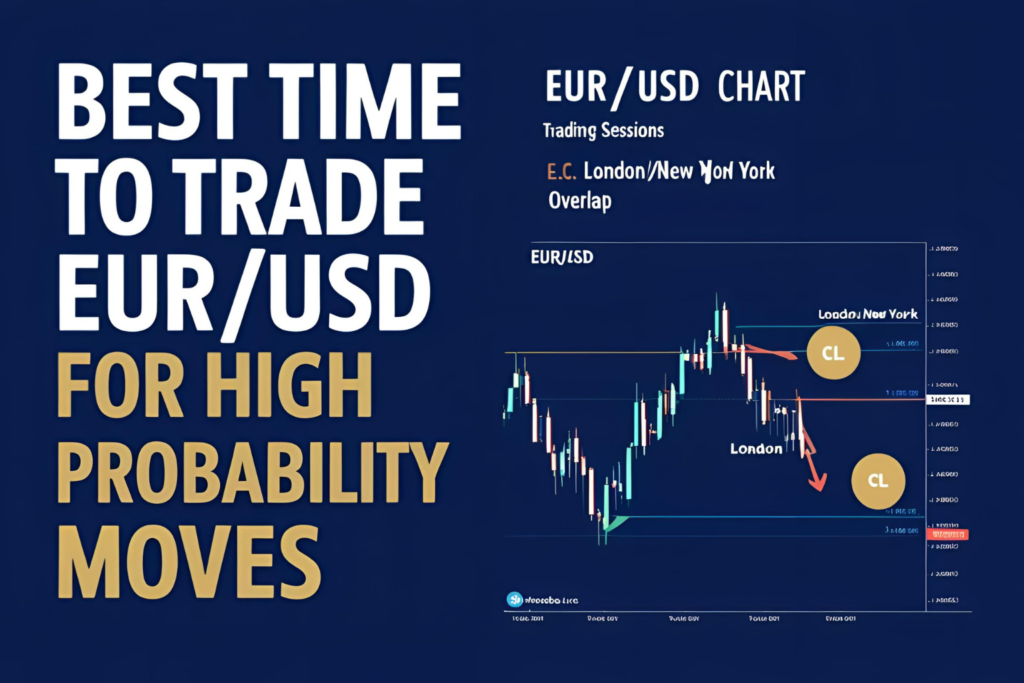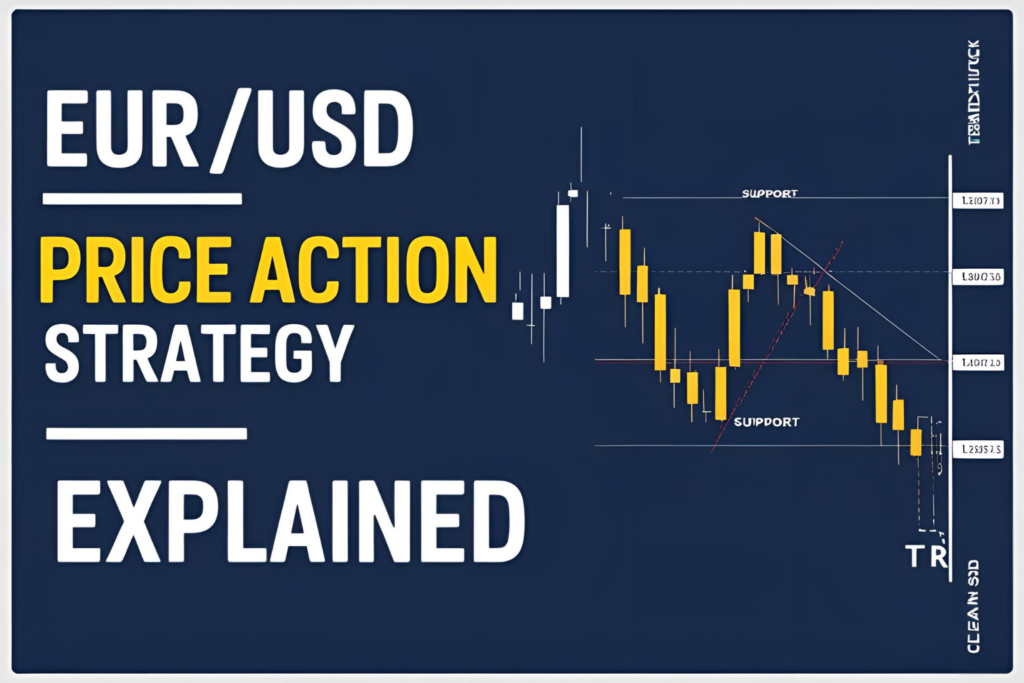Swing trading EUR/USD is a popular approach among traders who want to capture short- to medium-term moves without watching the market all day. This strategy typically holds positions for a few days to a couple of weeks, aiming to profit from significant directional moves.
In this guide, you’ll learn how to swing trade EUR/USD with a proven method and practical risk management.
What Is Swing Trading?
Swing trading is a style that targets price swings within a trend. Unlike day trading, swing traders hold trades for longer periods and focus on broader technical signals, often using the 4-hour and daily charts.
It suits traders who want flexibility and don’t want to stay glued to the screen all day.
Why EUR/USD Is Ideal for Swing Trading
- Stable volatility: Allows larger moves without extreme risk
- High liquidity: Smooth price action with fewer gaps
- Plenty of news catalysts: Regular events trigger directional moves
- Widespread broker support: Low spreads and leverage options
These characteristics make EUR/USD one of the best pairs for swing trading.
Simple EUR/USD Swing Trading Strategy
1. Identify the Trend on the Daily Chart
- Use a 50-day and 200-day Simple Moving Average (SMA)
- Bullish trend: 50 SMA above 200 SMA
- Bearish trend: 50 SMA below 200 SMA
2. Wait for a Pullback to a Key Zone
- Draw horizontal support/resistance levels
- Use Fibonacci retracement (38.2%–61.8%) for precise entry zones
- Confirm pullback with candlestick patterns like pin bars or engulfing candles
3. Enter with Confirmation
- Entry on break of confirmation candle high/low
- Stop-loss just below the support (or above resistance)
- Take-profit at the next major resistance/support or a fixed risk-reward (e.g., 1:2)
Key Tools and Indicators
- Daily chart for trend context
- 4-hour chart for timing entries
- RSI or MACD for confirmation
- ATR (Average True Range) for calculating realistic stop-losses
Risk Control Tips for Swing Trading
- Never risk more than 1–2% of your capital per trade
- Use position sizing based on stop-loss distance
- Avoid trading just before major news events
- Stick to your plan; don’t chase price after a missed entry
Swing trading requires patience and consistency—emotions should not influence your execution.
Frequently Asked Questions (FAQs)
1. What’s the best timeframe for swing trading EUR/USD?
The daily chart for trend and the 4-hour chart for entries offer the best combination for swing traders.
2. How many trades should I take per week?
2 to 4 well-selected trades are enough. Focus on quality over quantity.
3. Can I swing trade EUR/USD with a small account?
Yes, with proper lot sizing and risk control, swing trading is suitable for small accounts.
4. What indicators work well for EUR/USD swing trading?
Moving averages, RSI, MACD, and Fibonacci retracement levels are effective.
5. Is swing trading less risky than day trading?
It depends on your strategy and discipline. Both styles carry risk, but swing trading allows more time for analysis and planning.



